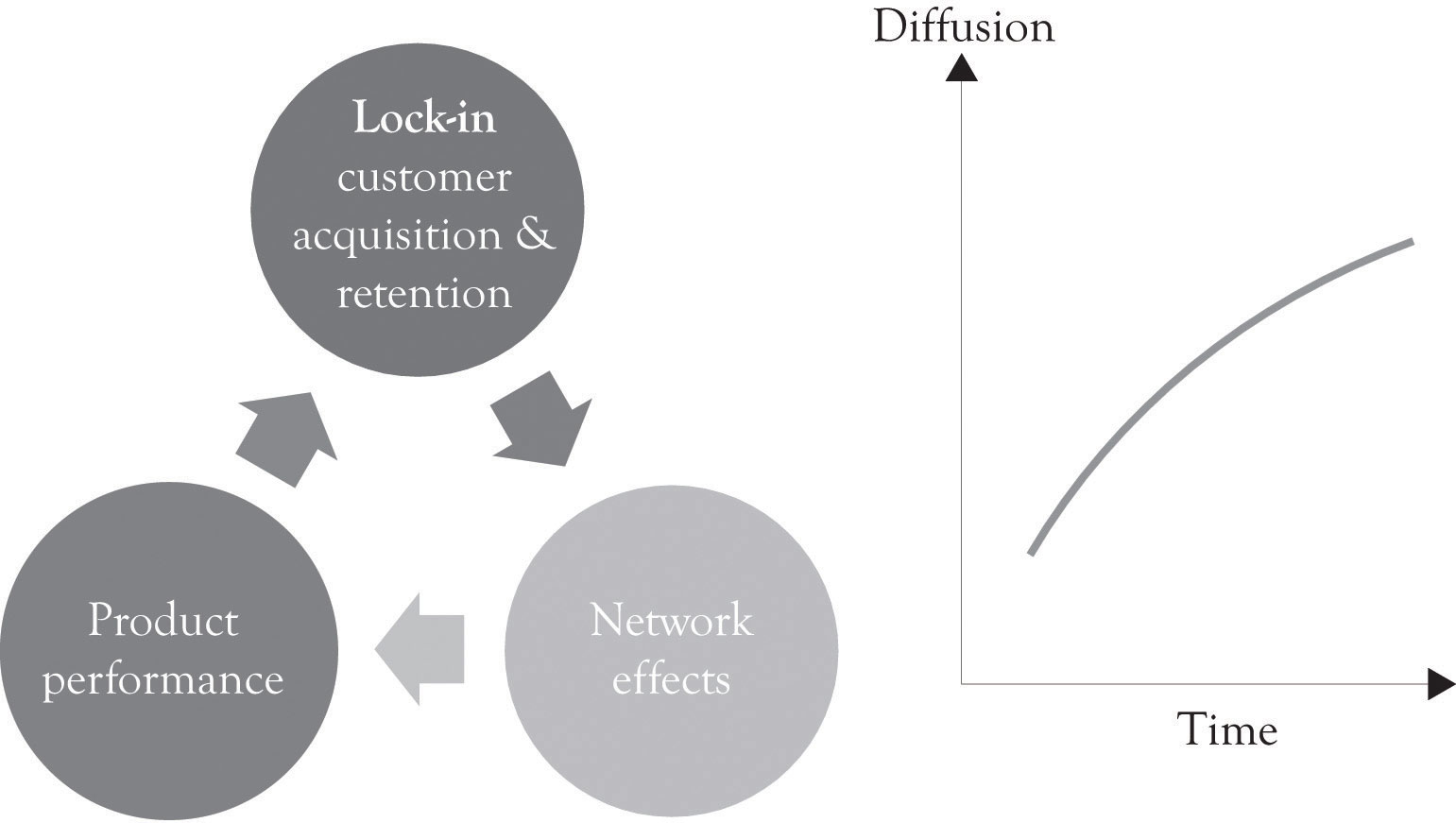10.1: Lock-In Leads to Network Effects and Increased Product Performance
- Page ID
- 22943
Introduction
Lock-in occurs when there are costs involved in switching from one product or service to another product or service. For example, consider how cable television broadband providers and wireless phone providers have penalties for the customers who terminate a contract within the term of specific agreement periods. Switching costs can also involve time and psychological effort. When you switch cable providers, there is a definite learning curve related to using the new station guide and digital video-recording device. Cable providers try to increase monetary and psychological switching costs so that consumers are locked-in to their service. The nature of psychological switching costs can be traced to past use of a product and to the learning effects as consumers become attached to the product and become familiar with the interface and how to control the interface. Economists have identified a related concept that they refer to as the increasing-returns-to-adoption phenomena where the use of a technology leads to greater use and this in turn leads to technological improvements.Arthur (1989). This “learning by use” approach, which we have also described in an earlier chapter as the learning-by-doing phenomena, creates a situation where locking-in customers essentially locks-out the competition.
Lock-in also increases the so-called network effect phenomenon. A network effect occurs when the value of a good is dependent on the number of customers already owning that good. Metcalfe’s law states that the value or utility of a network is proportional to the number of users of the network.Shapiro and Varian (1998). In the economics literature, a network effect typically refers to a change in the positive benefit that a consumer receives from a product when the number of consumers of the good increases.Liebowitz and Margolis (1994). Lock-in is also related to Moore’s law, whereby the performance of products always increases over time and the cost of the product stays the same or decreases. This increase in performance is a function of technological developments and learning curve effects. When network effects are combined with increased product performance, product diffusion can increase dramatically and result in exponential market growth and sales (see Figure 10.1 "Growth and Lock-In").
Figure 10.1 Growth and Lock-In



